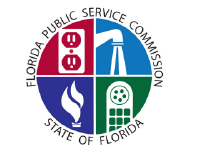New Nuclear Power Eyed in Florida
 Article reposted with permission from The News Service of Florida.
Article reposted with permission from The News Service of Florida.
After the issue was tucked into a wide-ranging energy bill approved by Gov. Ron DeSantis and the Legislature, state regulators in the coming months will study the feasibility of adding more nuclear power.
The Florida Public Service Commission has scheduled a Sept. 5 workshop as it begins carrying out a legislative directive to submit a report by April 2025 about the possibility of using “advanced” nuclear technologies. That includes the possibility of adding nuclear power at military bases.
The legislative directive came as the Biden administration also is taking similar steps that could bolster nuclear projects. The Biden administration announced May 29 that it was forming a working group as part of a goal of “delivering an efficient and cost-effective deployment of clean, reliable nuclear energy and ensuring that learnings translate to cost savings for future construction and deployment.”
The White House also said the U.S. Army would release what is known as a “request for information” as a step toward using advanced reactors to power Army bases and that the Nuclear Regulatory Commission is working to streamline permitting for nuclear projects.
“Taken together, these actions represent the largest sustained push to accelerate civil nuclear deployment in the United States in nearly five decades,” the White House said in announcing the moves.
Nuclear plants generate about 13 percent of Florida’s electricity, according to a state House analysis, with Florida Power & Light operating the St. Lucie and Turkey Point plants.
But the state hasn’t had new nuclear plants since the 1970s and 1980s. Also, Duke Energy Florida decided in 2013 to permanently shut down a Crystal River nuclear plant that had sustained damage in a containment building.
Lawmakers this year included the nuclear-power study in a bill (HB 1645) that included higher-profile issues such as eliminating references in state law to reducing greenhouse-gas emissions and barring offshore wind-energy production.
While incidents such as the 1979 accident at the Three Mile Island nuclear plant in Pennsylvania long stymied nuclear projects in the U.S., the issue has drawn renewed interest in recent years. In part, that is because of efforts to reduce carbon emissions from coal-fired and natural-gas power plants.
Another factor is the development of new technology. The U.S. Department of Energy’s Office of Nuclear Energy said on its website that advanced reactors have a simpler design than older reactors, which “means they require fewer components, less maintenance and fewer workers. In addition, they are designed to be self-adjusting and fail-safe with passive safety systems that prevent the possibility of over-heating.”
 Enter your email address in the
Enter your email address in the 